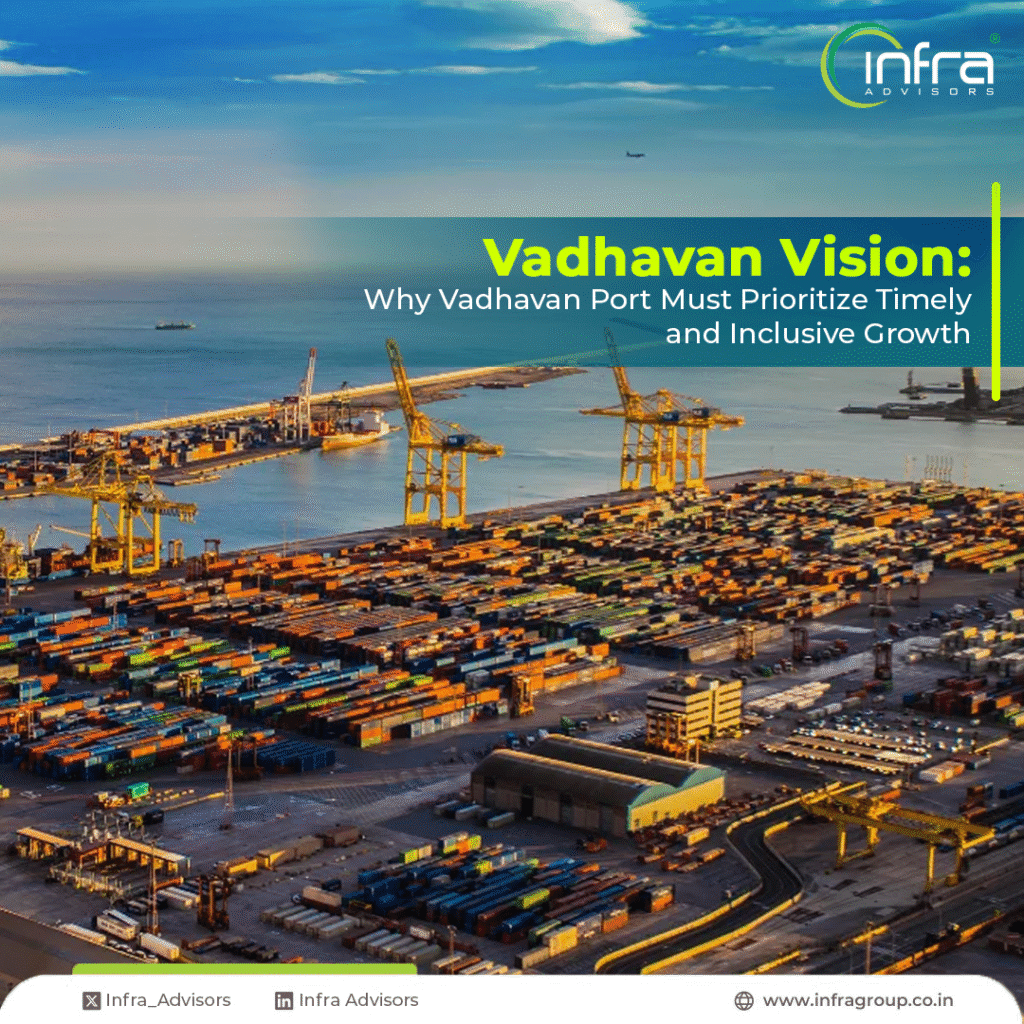India’s maritime future is taking shape on the western coast of Maharashtra with the ambitious Vadhavan Port project- a development often described as a potential “Focal Point of an Economic Revolution.” With the vision to become one of the top ten ports globally in terms of capacity and strategic significance, Vadhavan represents more than just an infrastructural upgrade; it embodies India’s aspirations to emerge as a global trade powerhouse. Yet, the true success of the project will not be measured by its scale alone, but by the timeliness, transparency, and inclusiveness with which it is executed.
Timely implementation is a cornerstone for the economic viability of any large infrastructure project, and Vadhavan is no exception. Delays not only inflate project costs but also reduce competitive advantages and slow down broader economic gains. In a globally competitive maritime landscape, efficiency in execution is critical. This demands a time-bound, milestone-driven strategy backed by proactive governance and seamless inter-agency coordination.
Government departments, environmental authorities, contractors, and community representatives must all operate in synchrony, with clearly defined responsibilities and deadlines. The longer the delay, the further India risks falling behind in the global logistics and trade race.
Yet speed alone isn’t the answer. Rapid development must go hand in hand with responsibility. Vadhavan’s location near ecologically sensitive coastal areas makes it essential to obtain environmental clearances and statutory approvals swiftly but without compromising the integrity of the process. Environmental Impact Assessments should be thorough, transparent, and science-based, with real and enforceable mitigation strategies. Green infrastructure practices must be embedded into the port’s design from the outset ranging from waste management and shore power facilities to low-emission logistics operations. Sustainable growth is no longer optional, it is a necessity for long-term relevance and resilience.
Equally important is the social dimension. The long-term success of the Vadhavan Port cannot and must not come at the cost of local communities. Those who live and work in the region, particularly traditional fishing communities, face serious concerns about displacement, livelihood loss, and ecological degradation. These issues require more than compensation, they require meaningful engagement, early dialogue, and long-term rehabilitation and support systems. Transparent communication and inclusive consultation must become a core part of the project’s DNA. It’s essential that local voices aren’t just heard, they must be reflected in the decisions made. Empowering affected communities with employment opportunities, training programs, and a stake in the port’s development can transform potential resistance into shared ownership.
Moreover, Vadhavan is more than just a cargo handling facility. It is a gateway to economic acceleration. With enhanced capacity, the port is expected to reduce logistic costs, decongest existing ports, and become a key transshipment hub in the Indian Ocean region. Its ripple effects could spark the growth of logistics parks, industrial clusters, and urban development in surrounding areas. But that transformation must be equitable. The benefits of progress must be distributed fairly, ensuring that no community is left behind in the pursuit of national growth.
The Vadhavan Port project is a test case not just of infrastructure delivery, but of how modern India approaches development in the 21st century. It is an opportunity to set new benchmarks for speed, sustainability, and social equity in public infrastructure. And the world is watching.


